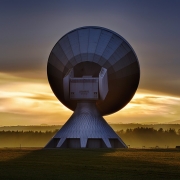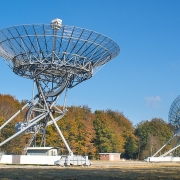Why is the antenna tower very high?
A little attention will reveal that the surrounding antenna towers are very high, or simply put a signal tower on the local high-rise.
I have never known why I have to do this before, but I just take it for granted.
However, after learning the communication principle recently, I understand why the antenna tower is relatively high.
Line-of-sight propagation
Line-of-sight propagation (LOS propagation) refers to the propagation of spatial waves between two points that can be reached directly when using ultrashort waves and microwaves for terrestrial communication and broadcasting. The distance is similar to the distance that the person on the ground can see and generally does not exceed 50km.
High-frequency (2MHz~30MHz) electromagnetic waves are called high-frequency electromagnetic waves, which can penetrate the lowest atmospheric ionosphere, but will be reflected back to the ground by the high-level ionosphere. The ground will then reflect the electromagnetic waves back to the atmosphere, thus generating sky-wave propagation. the way.

Electromagnetic waves with a frequency higher than 30MHz will directly penetrate the ionosphere. The signal of our mobile phone belongs to the ultrashort wave, and the frequency is much higher than 30MHz.
Therefore, how mobile phone signals are transmitted belongs to line-of-sight propagation.
Let the height of the antenna be equal to h, and the radius R of the earth is 6370km. It is known from the Pythagorean theorem:
D2+R2=(h+R)2
then
D is the distance between the two antennas, then there is
D2=(2d)2=8Rh
Bring the value of R into the above formula to get
Where: D is the distance between the transmitting and receiving antennas (km)
Further explanation of the reasons for the tower height
Generally, the distance between the transmitting and receiving antennas is 20km~50km. The reason for taking this distance is to consider many factors, such as the tower is too high in cost, the distance is too far, the power is high, and so on.
The distance D for the line-of-sight transmission is 50 km. It can be known from the formula derived above that the height h of the antenna is 50 m.
Therefore, the antenna tower is always high. (manually nod)
Knowledge extension
From the above we know that the distance of the line of sight is generally 50km, so what about the long-distance transmission? This makes it possible to adopt a wireless relay method.


Four-frequency system

Two-frequency system
In the case where the line-of-sight propagation distance is 50 km, an antenna tower can be built every 50 km, and then the signal is forwarded every 50 km. Moreover, the frequency of receiving and transmitting each tower needs to be different, otherwise, the mixing problem will occur and the signal cannot be recovered.
It can be known from the formula derivation above that the distance of the line of sight propagation is related to the height of the antenna erection. If the distance of the line of sight is to be further away, the antenna erection is required to be higher; but considering the cost of the antenna tower, It is difficult to complete on the ground, so you can consider using the satellite as a forwarding station (base station), which is also called satellite communication.
However, the delay of satellite communication is relatively high, and the cost of the satellite is not low. After all, it is still not easy. The current stratospheric communication is working to solve this delay problem.
This type of project is called an airbase station, and some large companies such as Google and Facebook are currently working on this project. The advantages of using an airbase station are very obvious, and it is possible to avoid the artificial laying of infrastructure such as a fiber network, and the cost is low, and there is no need to worry about vandalism.
However, there are still many problems in the airbase station, such as how to maintain stable high bandwidth and how to maintain a reliable network environment. These are very big problems because the airbase station is in the stratosphere and will be affected by the weather. Wireless network technology needs to be implemented with microwave, millimeter-wave or FSO (free-space optical communication system), but microwaves have relatively low capacitance; millimeter waves and FSO are often affected by weather (millimeter waves do not work properly in rainy weather), the performance of FSO will be affected by dust and fog). Moreover, the airbase station still has a problem of unfixed displacement, which is caused by the rotation of the earth. This is a very big problem. If two wireless transceivers are separated by 5 miles, one of them deviates from the normal position by only 1°, and the last signal arrives at the target. The position will be offset by nearly 500 feet from the initial position.
From:http://www.hj-antenna.com/why-is-the-antenna-tower-very-high/









Leave a Reply
Want to join the discussion?Feel free to contribute!